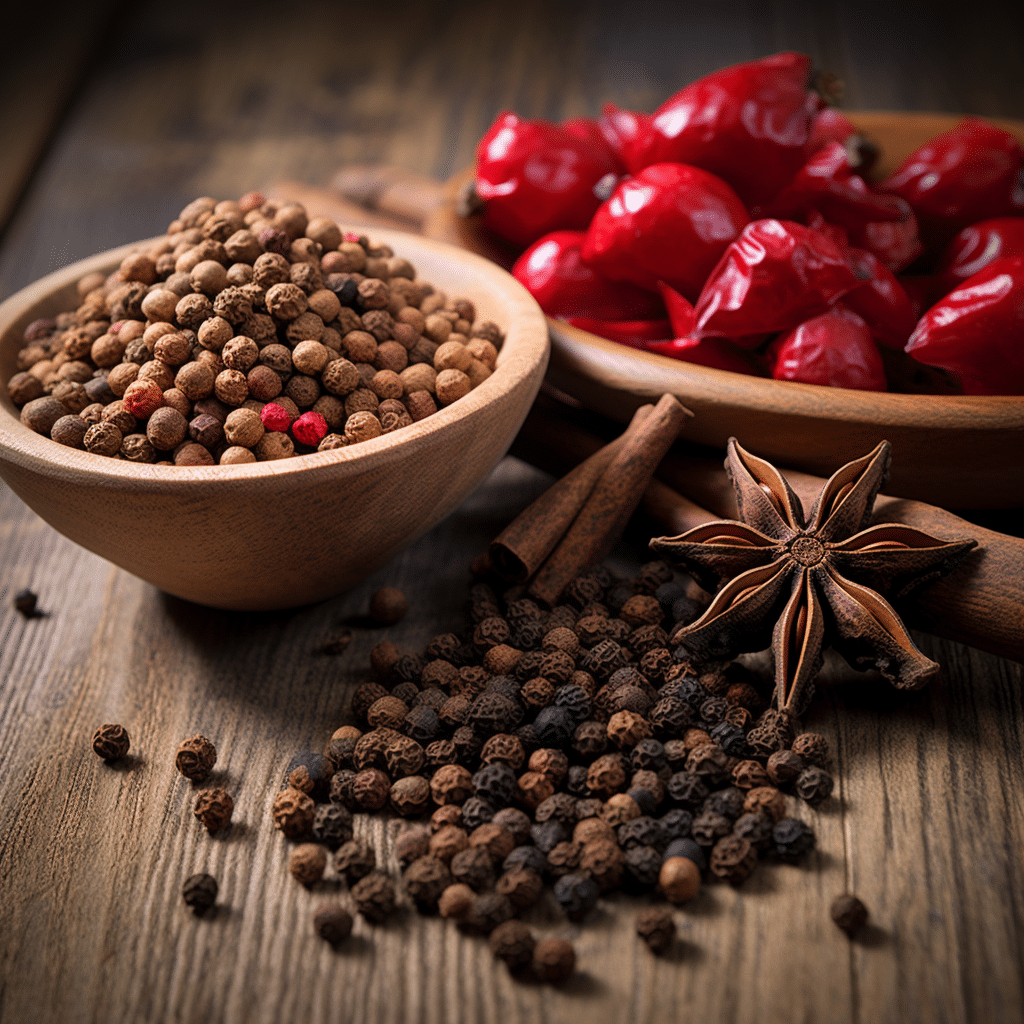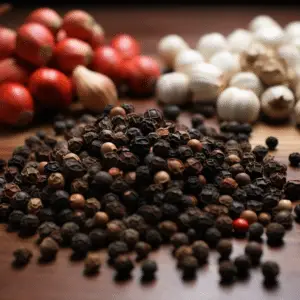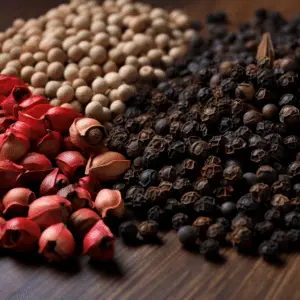
Pimento Seeds vs. Allspice: Spiciness, Flavor, and Benefits
Pimento Seeds vs. Allspice Comparison: Whether you’re a fan of savory dishes (like blackened salmon or tacos) or one who loves spicy food (for instance), pimento pepper and allspice are two common ingredients in many dishes. These spices are both derived from the fruits of the Pimenta dioica tree native to Central and South America. As you would expect, their taste is almost similar since they share the same origin.
However, despite being similar, most of us don’t use either of these products often ourselves. We’ve got them mixed into other ingredients in one way or another. However, I’m sure you have asked yourself which is better.
Which is hotter or spicier than the other or more appealing to taste buds? Keep reading to learn more.

Pimento Seeds vs. Allspice: Overview
What are Pimento seeds?
Pimentos were first brought to America from the West Indies by early European settlers who used them for flavoring their food products. Later, it became popular as a spice in many western dishes like gumbo, shrimp Creole, blackened fish, and fried chicken.
Pimento is a small and well round fruit obtained from a shrub native to the West Indies, Central America, and South America. The Pimento tree is Pimento Seeds vs. Allspice Comparison well known for surviving in adverse tropical conditions, as is its counterpart members of the Myrtaceae family. So usually, to get the seeds, the fruits are harvested when unripe and dried until they are brownish.
They are then grounded to produce an aromatic powder that has recently become popular in many southern dishes. The seeds produce a peppery spice, which you will find in many restaurants called Jamaican or West Indian pepper.
The pimento’s distinctive flavor comes from capsaicin, which is present in all peppers except bell peppers (Capsicum annuum). Capsaicin gives peppers heat and makes them taste spicy when chewed or eaten raw. It also gives pimentos their distinctive flavor when eaten whole or crushed into a paste or powder.
Pimento pepper is used in many recipes, but it is especially popular as a garnish for meats and seafood. For example, you can add pimentos to shrimp or other shellfish dishes to add a smoky flavor that compliments the sweet taste of the seafood. Pimentos also make an important ingredient in some cheesecakes and ice cream recipes.
Pimento seeds were first brought to America from the West Indies by early European settlers who used them for flavoring their food products. Later, it became popular as a spice in many western dishes like gumbo, shrimp Creole, blackened fish, and fried chicken.
Health Benefits of Pimento seeds
Pimento seeds are also known to have a variety of health benefits. They have long been used as an effective remedy for diarrhea and dysentery. The seeds are rich in thymol, which makes them antibacterial, anti-fungal, and anti-inflammatory.
They are also a rich source of antioxidants essential for neutralizing free radicals. Additionally, pimento seeds contain oil which is known for its analgesic properties. It is ideal for treating arthritis pain and swelling in muscles.
What is Allspice?
Allspice is a spice derived from the fruit of the Pimenta dioica tree, which is native to the West Indies. It is used in both savory and sweet dishes. Basically, the allspice berry is not used as a spice. The dried unripe fruit is the basic source of allspice.
Ideally, the berries are picked from the tree when green and then dried for several weeks in warm, dry conditions. The resulting spice has a distinct flavor and aroma, which can be described as a cross between cinnamon and cloves.
Allspice is widely used, though its flavor profile varies by region and culture. Similarly, it has a long history of use in many cuisines across the globe since it was historically traded in Caribbean islands by Europeans, who then exported it to Europe.
Health Benefits of Allspice
Allspice is one of the most widely used spices in the world. You can find it in many dishes, including stews, soups, and sauces. Allspice has a wide variety of health benefits. Here are some of them:
Pain reliever
When taken internally, allspice may help relieve pain due to various conditions, including arthritis and menstrual cramps.
Similarly, allspice has anti-inflammatory effects that may reduce symptoms such as swelling, stiffness, and spasms associated with arthritis or other musculoskeletal problems.
Increase circulation
Allspice increases blood circulation and improves blood flow in your legs and arms. This increases energy levels and overall health due to increased circulation throughout the body.
Improve mood
Allspice is known to boost mood and help with depression — thanks to its volatile oils, which are thought to increase serotonin levels in the brain (the “happy hormone”). It also appears to have antioxidant properties that might help balance stress hormones like cortisol.
Eliminate fungal infections
The volatile oil found in allspice may also kill some types of fungi that cause yeast infections (candida). Scientists believe this may be why some people find allspice effective in treating thrush or other vaginal problems caused by yeasts or fungus.
How Pimento seeds and Allspice Compare
Pimento seeds and allspice are spices often used for flavoring dishes. They both have a similar flavor and can be used interchangeably in recipes; however, there are some differences between the two spices.
Both pimento seeds and allspice have strong flavors often used to flavor food. However, they each have unique properties that make them different in certain ways. For example, pimento seeds are much tarter than allspice because they contain capsaicin, which causes people’s mouths to burn when they eat them—allspice does not contain this chemical.
Pimento seeds vs. allspice: Which one should you use?
All in all, both pimento and allspice have their distinct flavors. Pimento seeds have a milder taste than allspice and are often used in stews and soups. Allspice has a stronger taste with more of an aromatic aftertaste. You can use both spices for cooking, but it depends on your preference whether you would go for pimento or allspice.

Bottom Line
There is Pimento Seeds vs. Allspice Comparison little difference between pimento seeds and allspice, except for their flavors. Allspice is sweeter with a milder taste, ranging from nutmeg to cinnamon to clove, whereas pimentos are peppery and slightly hotter than allspice.
And since both spices were used interchangeably in ancient times, it isn’t easy to come up with a definitive answer. However, as written records became more available, there was more evidence that pimento was used than allspice.